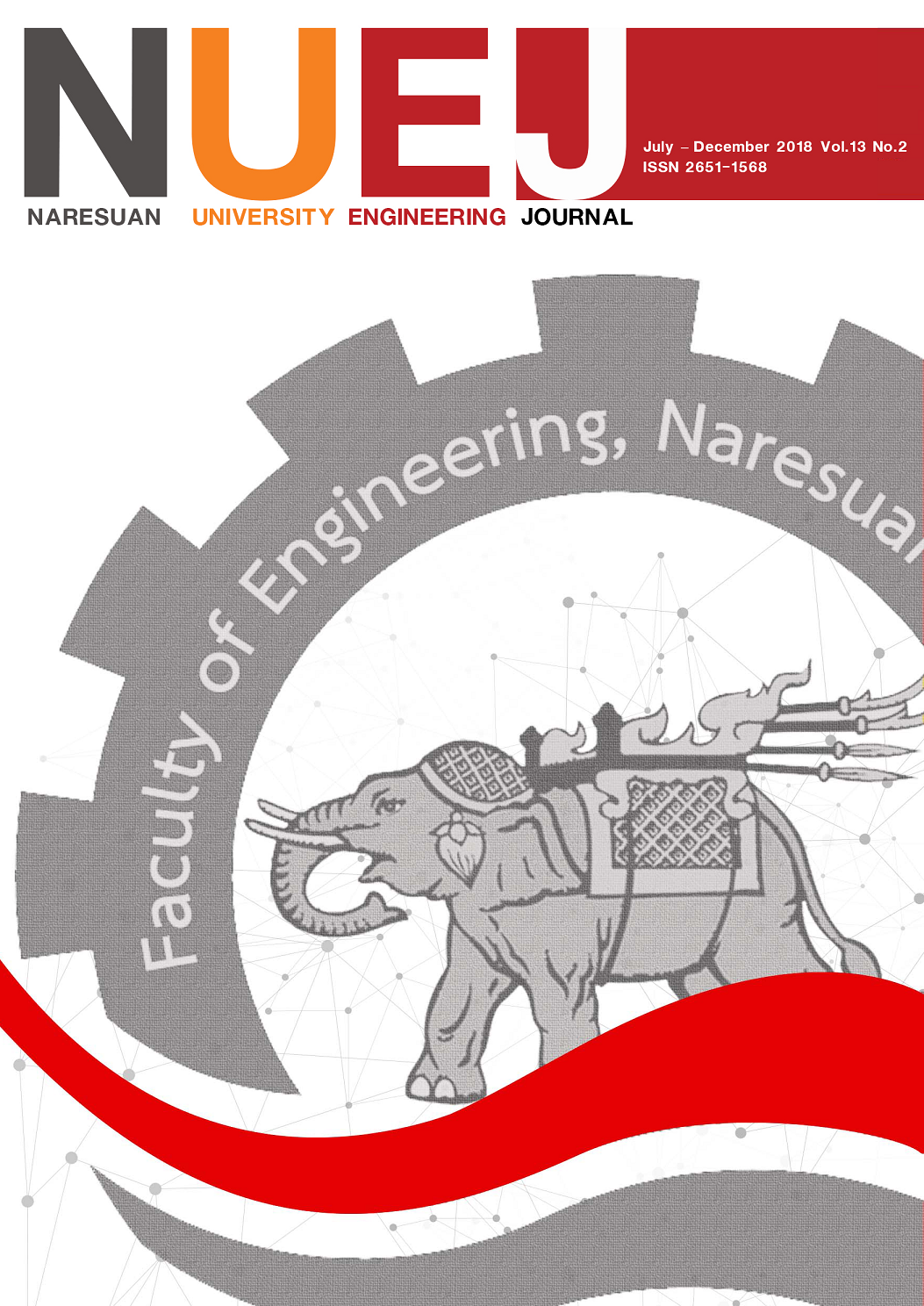A study on the effect of different types of coarse aggregates on the shrinkage behavior of concrete
Main Article Content
Abstract
This research aims to study the effect of different types of coarse aggregate on the shrinkage behavior of concrete. Four types of coarse aggregate normally used in the construction industry from various regions in Thailand were examined, including basalt from the Northeast, granite from the East, limestone from the Central region, and river gravel from the Northeast along the Mekong river. The test parameters in this study include density, water absorption, and elastic modulus of coarse aggregate. Then, analyses were carried out on the relationship between these physical properties and the shrinkage of concrete (autogenous and total shrinkage). Ordinary Portland cement (OPC) type I was used in this study as the concrete’s binder phase and the water-cement ratios (w/b) of concrete were constant as 0.35 and 0.55. The test results showed that different physical properties were presented in different types of coarse aggregate. As a result, concrete mixtures produced from different types of coarse aggregate have different shrinkage behavior (autogenous and total shrinkage). The shrinkage of hardened concrete tends to increase with an increase of the density and water absorption of coarse aggregate. On the other hand, it is likely to decrease as the modulus of elasticity of rock increase
Article Details
References
[2] Fujiwara, T. (2008). Effect of aggregate on drying shrinkage of concrete. Journal of Advanced Concrete Technology, 6, No. 1, 31-44.
[3] Kwan A. K. H., Fung W. W. S. and Wong H. H. C. (2010). Reducing drying shrinkage of concrete by treatment of aggregate. Magazine of Concrete Research, 62, No. 6, 435–442.
[4] Kwan A. K. H., Au F. T. K., Wong H. H. C. and Ng P. L. (2010). Shrinkage of Hong Kong granite aggregate concrete. Magazine of Concrete Research, 62, No. 2, 115–126.
[5] Zhang W., Zakaria M. and Hama Y. (2013). Influence of aggregate materials characteristics on the drying shrinkage properties of mortar and concrete. Construction and Building Materials, 49, 500-510.
[6] Jensen O. M. and Hansen P. F. (2001). Water-entrained cement-based materials I. Principles and theoretical background. Cement and Concrete Research, Vol. 31, 647-654.
[7] Kovler, K. and Jensen, O. M. (2005). Novel techniques for concrete curing – New method for low w/cm mixtures. Concrete International, 39-42.
[8] Imamoto, K. and Arai, M. (2008). Simplified evaluation of shrinkage aggregate based on BET surface area using water vapor. Journal of Advanced Concrete Technology, 6, No. 1, 69-75.


